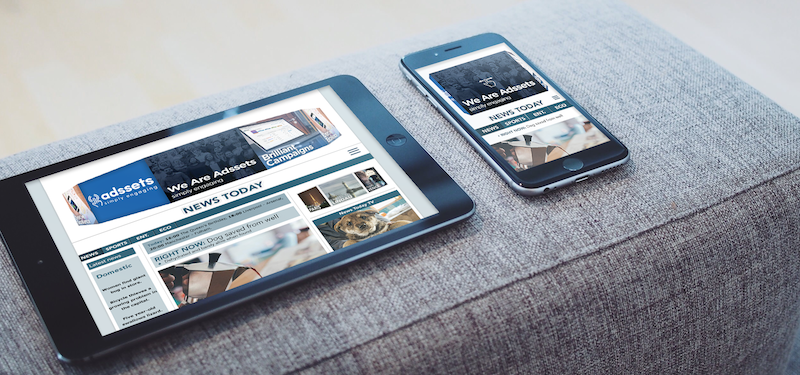Making a Case for Interactive Engaging Formats.
TO PARAPHRASE recent Nobel prize winner Bob Dylan, the times of media consumption they are a-changing. Print newspapers are in rapid decline and traditional television is following suit. A 2015 report from Kleiner Perkins Caufield Byers showed that 48 % of all media was consumed on a desktop or mobile device. By the end of this year, digital media consumption should exceed television, radio and print put together.
Although ad spending is still somewhat lagging in terms of matching time spent in respective media, an increasing number of brands are realising that digital provides an opportunity to reach consumers that otherwise would have been inaccessible. As a result, spending on digital display advertising is accelerating rapidly. Expenditure is expected to surpass $37 billion in 2017 in the US alone, a 40 % increase to 2015 totals. Mobile is the premiered device, seeing more than twice the amount of ad spending compared to desktop. An end to the trend also seems highly unlikely. 50 % of the adult global population has a smartphone today. By 2020, that figure is going to be around 80 %. No wonder Facebook is saying the mobile-first target audience is their most important.
The numbers show the vitality of the interactive marketplace and its power of to attract consumers. However, a large part of the ad spending is suboptimal. Results for a campaign featuring the same format inevitably vary over time to eventually perpetually decline. Combined with an outdated CPM model, brands without display advertising savoir-faire often find themselves stuck with low quality, high quantity campaigns in order to achieve enough impressions to make money from digital. Not only is that bad for branding purposes and ROI, it also annoys consumers who despise invasive ad formats and display little patience for incessant stalking for items already bought.
The current ad blocking movement is a direct result of this ire and is costing the industry a lot of money. Informa Group’s research arm Ovum estimated the losses to an astronomical $78 billion by 2020 if no countermeasures are taken. By their own admission, that figure represents a worst-case scenario. The best-case scenario – in which publishers take every countermeasure possible – estimates ad blocking to cost $16 billion globally by 2020.
Luckily, one of the best antidotes to ad blocking is already available. Innovative, relevant and engaging formats create memorable experiences instead of obtrusive disruptions the consumer would just as soon forget. Recent research has demonstrated that when the format is seen positively, so is the brand or product.
Interactivity provides a good start. Interactive ads will deliver substantially more engaging experiences compared to traditional interstitial ads and, because of it, markedly better results. In the aforementioned study, 61 % of the respondents exposed to the interactive ad (a Spincube) considered it to be appealing, with 21 % considering it “very appealing”. Compared to the interstitial ad, it marks an increase by 82 %. Although format design and exposure goes a certain way to explain the results, interactivity itself has a raison d’être. Neuroscientific research has shown that it aids the brain’s receptiveness to branded messages. Consequently, any brand looking to stand out in a crowded mobile marketing world would do well to recognize the importance of interactivity and factor it into their campaigns.
For optimum results, more is needed though. Interactivity itself is not enough to deliver true impact. To spark interest and drive brand consideration, engagement is also required. The end goal, in other words, is not merely an interactive format, but an engaging interactive format. The Spincube used in the study, a demonstrably engaging format, triggered certain emotions (surprise, emotion, intrigue) that were not experienced from interstitial formats. Consumers who showed these emotions after viewing the ads were significantly more likely to consider the advertised product in the near future. In fact, the score was 64 % higher than for other participants.
By adding advanced targeting options such as hyperlocal geo-targeting and ground-breaking Visual Engagement optimisation, engaging interactive ad formats are certain to deliver personally relevant experiences that maximise time spent between brand and consumer. In essence, they become the very antithesis to the underlying cause of the ad blocking movement and as such not only a smart choice for any campaign, but a necessary one.





